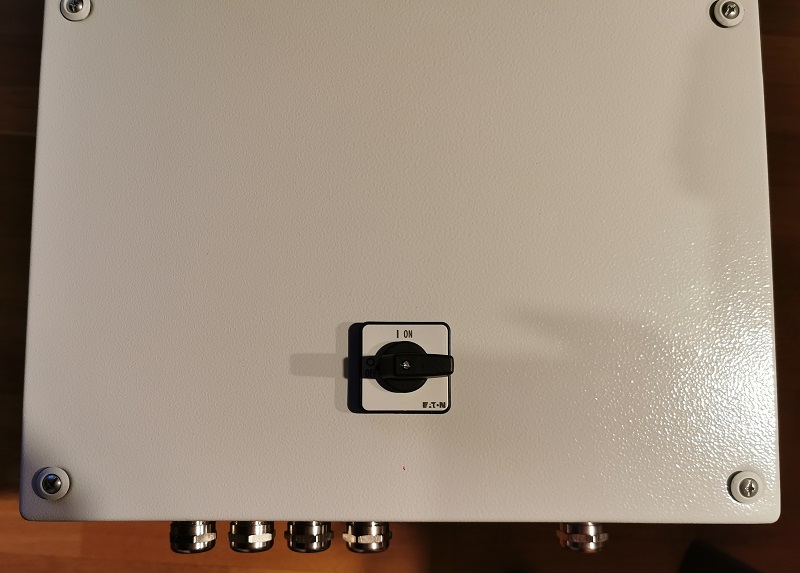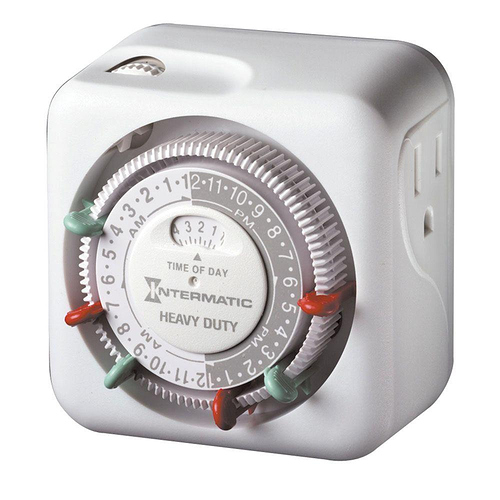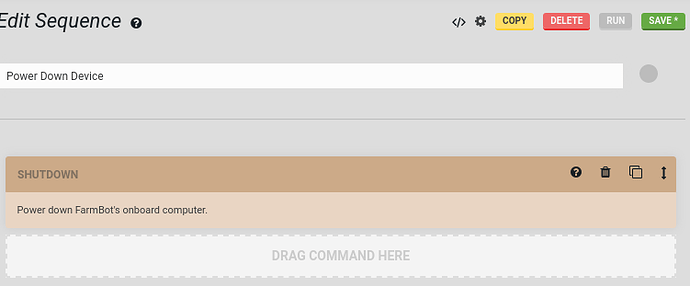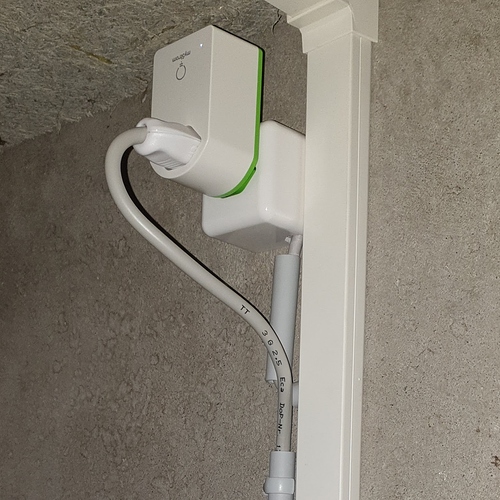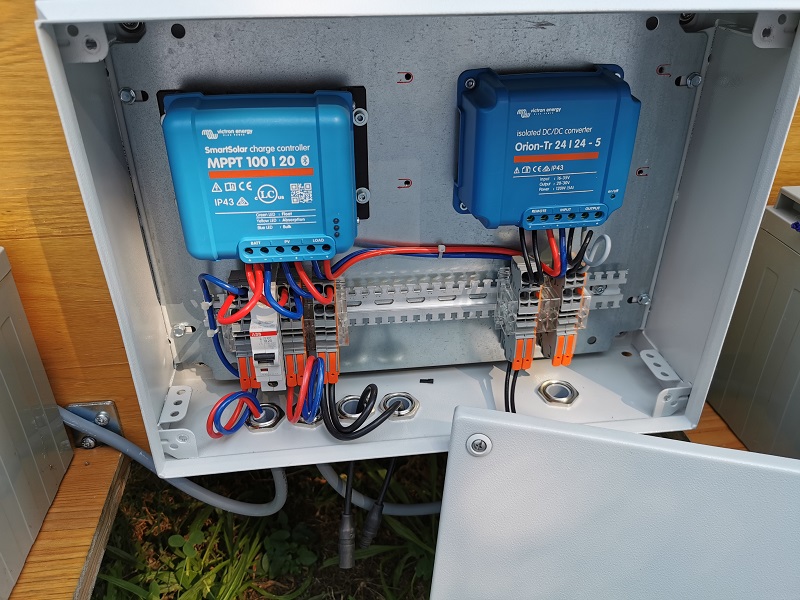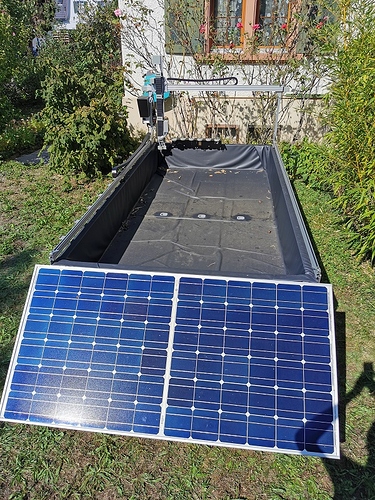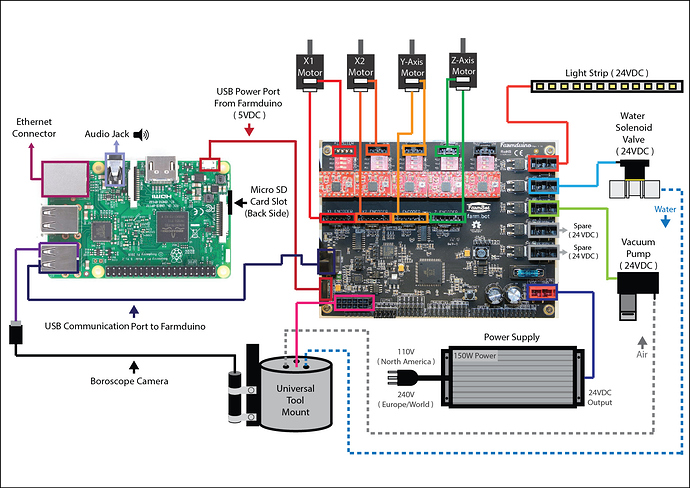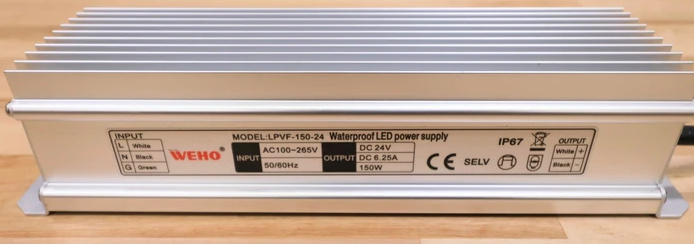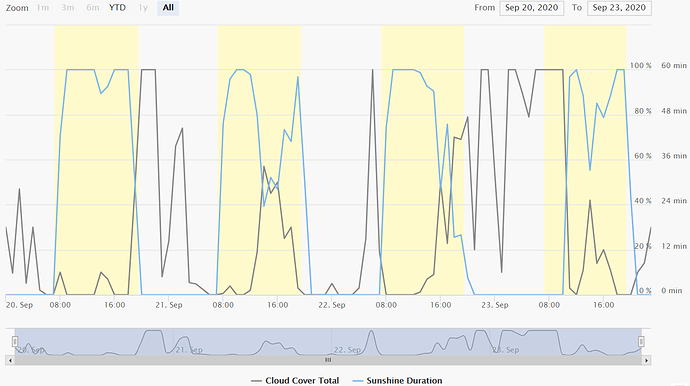Hello Phil @ClosedCircuit,
I just wanted to explain a few things about the power consumption of the FarmBot.
The FarmBot has a maximum power consumption of 150W. This is the maximum power output on our power supply. This level of power consumption is only used when all power consuming components like the motors are running and the lights are on. For most FarmBots in operation this is a very unlikely occurrence.
The minimum power consumption is about 50W and this is what the FarmBot uses in a typical idle state. This is what FarmBot consumes just to keep the FarmBot on and connected. This 50W includes about 20W for the Raspberry Pi computer and 30W to power the Farmduino.
During an average FarmBot power day, the power consumption typically varies between 30W and 150W depending upon the activity that you have the FarmBot doing.
When it comes to power consumption, the FarmBot doesn’t consume a significant amount of electricity in comparison to other appliances in your house. If you had your FarmBot working and doing tasks consuming 150W during the day and just running idle at night, assuming you have 12 hours of activity and 12 hours of idle time, you would consume 150W x 12h + 50W x 12h = 2400 W-h
Power Supply Specs for FarmBot Genesis v1.5:
Output Power: 24 volt, 6.25 amp DC
Input Power: 110 or 220 volt AC
Brand: Weho
The average electricity rate for the typical home in the USA is about 15 c per 1000W-h or using slightly different units $0.00015 per W-h.
Multiplying through the power consumption by the power cost 2400 W-h *$0.00015per W-h = $0.36 per day or $10.8 per month in a 30 day month.
If you had your FarmBot running all the time performing tasks and you were consuming 150W x 24 hours a day the power consumption would go up to 3600W-Hours. This would cost 3600W-h *$0.00015per W-h = $0.54 per day or $16 per month in 30 day month.
Recommendation on the practical use of Solar with the FarmBot Systems
Yes, you can use solar to power the FarmBot. It has been done before and we have documentation on it located here:
From a reliability standpoint, although it is possible to use Solar power to energize the FarmBot we don’t recommend for new FarmBot users because it adds another potential barrier to reliable operation.
If you do decide to proceed with a solar system you will need to pay special attention to the sizing of the solar power system and the requirement for battery capacity to last through several days of overcast sky. If the solar power system is under powered the FarmBot does not have any voltage protection. If the battery system, or the solar array is undersized and there are a few days without sunshine, the voltage will drop enough for the system to be depleted. The whole FarmBot system will go dead and there will be no communication back to the cloud.
At least for beginner FarmBot users we recommend that you plug in and use a dependable power source to power the FarmBot.
@ClosedCircuit Please share your experiences with us so that we can better understand the use of solar power with the FarmBot. Any advice, tips or tricks that you discover will be helpful to the community.
 ). There is no need to go this high. The batteries do have a high price tag (~600.- per piece in my configuration). So better calculate with less overhead and depending on what you really need. Maybe add a watt meter to your existing configuration and check what your consumption really is within a longer period of time (i.e. a month). This should give you real world data and make it easier to calculate the needed capacity.
). There is no need to go this high. The batteries do have a high price tag (~600.- per piece in my configuration). So better calculate with less overhead and depending on what you really need. Maybe add a watt meter to your existing configuration and check what your consumption really is within a longer period of time (i.e. a month). This should give you real world data and make it easier to calculate the needed capacity.